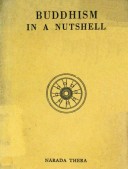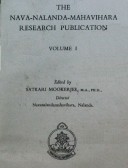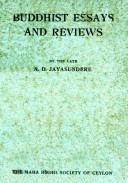Tìm Sách
Sách tiếng Anh-English >> The spirit of Zen
Thông tin tra cứu
- Tên sách : The spirit of Zen
- Tác giả : Alan W. Watts
- Dịch giả :
- Ngôn ngữ : Anh
- Số trang : 137
- Nhà xuất bản : Butler & Tanner Ltd., Frome and London - Great Britan
- Năm xuất bản : 1955
- Phân loại : Sách tiếng Anh-English
- MCB : 12010000004042
- OPAC :
- Tóm tắt :
THE SPIRIT OF ZEN
A Way of Life, Work and Art
In the Far East
By Alan W. Watts
FOREWORD
A short time ago Zen Buddhism was almost enterely unknown to the west, with the exception of a fer Orientalists whole interest in the subject was primarily academic. Just before the War there was only one work on Zen in any European language – Kaiten Nukariya’s Reigion of the Samurai – and a few scatered references in books on Buddhism in general. It was not until professor D. T. Suzuki of Kyoto publish the first volume of his Essays in Zen Buddhishm in 1927 that there was any work presented so as to excite the interest of the West with any effect, and at the same time to convey something of the real spirit of Zen. Subsequently Professor Suzuki published two more volumes of Essays, and it is largely owning to his work that we known anything of the subject at all. The result of his labours has been a swiftly increasing interest in Zen, not confined only to professed students of Oriental philosophy. Zen is so markedly different from any other form of religion, that it has roused the curiosity of many who would not ordinarily look to the “unpractical” East for practical wisdom.
One that curiosity is aroused it not easily set at rest, for Zen has a peculiar fascination for minds weary of conventional religion and philosophy
CONTENTS
Preface to Second Edition
Foreword
I The origin of Zen
II The secret of Zen
III The Technique of Zen
IV Life in a Zen Community
V Zen and the Civilization of the Far East
Conclusions
Appendices
 Facebook
Facebook
 Google
Google
 Google+
Google+


















